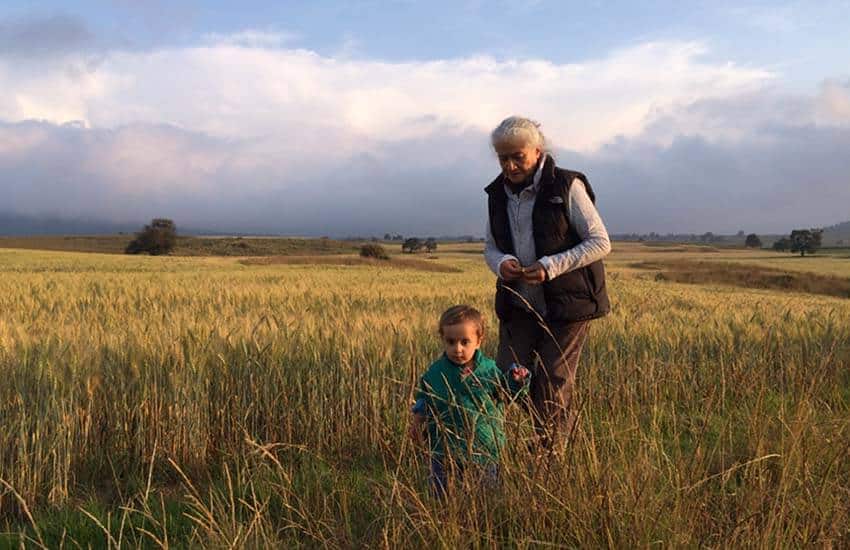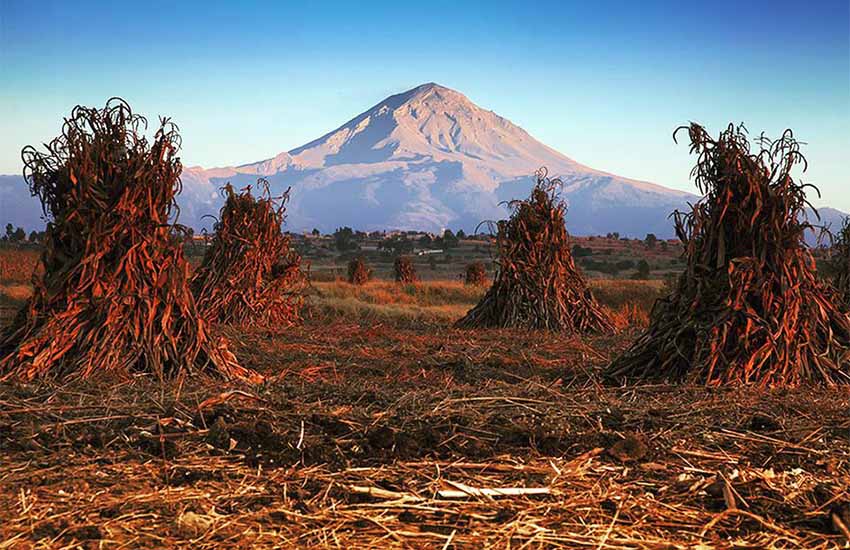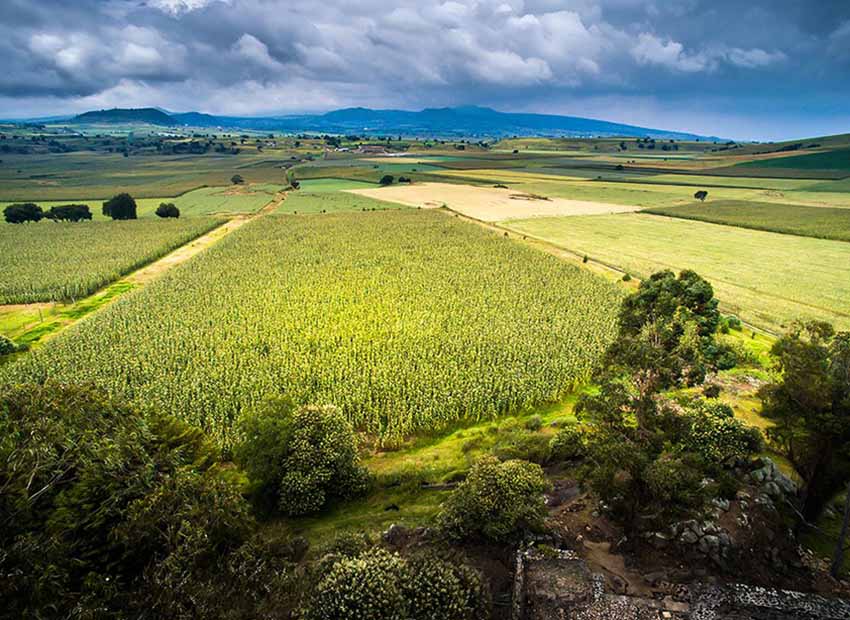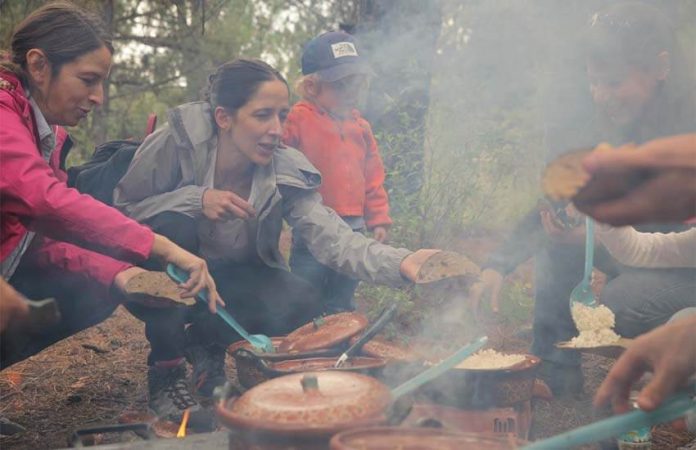“Agriculture is the fundamental root of all things,” said Marco Margain, chef and owner of Hacienda San Andrés, “because it has a direct relationship with what being present here means to all beings on this planet.”
Striking at the heart of the regenerative agriculture movement, which seeks to restore the land, Margain’s philosophy — and of those at Hacienda San Andrés — is to stabilize crop yields for sustainable production that can be shared with the community all year. Jumping away from the treadmill of modern consumption and urban routine and immersing oneself in nature, they argue, is critical to holistic health and plays a vital role in environmental awareness to boot.
Located one hour from Mexico City in Ayapango, México state, and 30 kilometers from Izta-Popo Zoquiapan National Park, the hacienda, originally established in 1535, has lived many lives. Used variously as the base for woodland exploitation, extracting timber used for the railway industry, as well as to house troops during the War of Independence, the site is steeped in the history of the land and of the peoples who have lived there since its founding.
Today, the hacienda is returning to tradition in order to cultivate knowledge of sustainable agriculture and nourish people through wholesome foods. Straddling history and the future, they are taking steps toward more time-honored farming techniques in order to produce unprocessed, organic food.
In 2014, Margain, the owner of farm-to-table restaurant Broka Bistrot in Mexico City’s Roma neighborhood, began this project in which healthy food became the backbone. At Hacienda San Andrés, everyone involved decided that the growing of food here would be clean —meaning avoiding or minimizing the use of synthetic fertilizers and pesticides and the causing of air, soil or water pollution — and would focus as much on restoring the land after decades of maltreatment and soil deprivation as it would on the items produced.

The upside of such an approach is that in the intervening years, the hacienda has grown a medley of nutritious fruits, vegetables and grains that taste better and are better. Its native corn, for example, has been sown according to tradition for 35 years; each year, they choose the best available seed to retain the quality and originality of their crop.
“The land,” Margain said, “already has more of the ingredients for cooking than you can possibly imagine. It only takes a little knowledge and some novel combinations to create something spectacular.”
Accordingly, he uses traditional techniques to create dishes based on ingredients grown at the hacienda — and if they have not grown it themselves, a local neighbor or friend has.
Margain and his kitchen team work according to the dynamic natural rhythms of the Earth, taking advantage of and consuming seasonal products. Organic waste from Margain’s restaurant, the renowned Broka, is returned to the hacienda to renourish the land, thereby creating a circular agri-food system that demonstrates the delicious possibilities of alternative food production and consumption.
Moreover, Hacienda San Andrés hopes to cultivate in others a knowledge of the land and of growing processes, with the purpose of generating an appreciation for the fruits of the fields. Artists, foodies of every variety and the merely curious are invited to stay and experience the farmland here, girdled by the peaks of Iztaccíhuatl and Popocatépetl, the namesake volcanoes of the Izta-Popo park.
In particular, they are looking to show children the urgent need for society to change its eating habits and promote the development of healthy agriculture. What is most important to Margain is alerting young people to the work that goes into food production and the power that you harness by doing it well, under the idea that young people are the future of the planet and nurturing their sense of stewardship of it is key to Earth’s long-term health.

Modern food consumption has become a threat to food production systems, they believe at San Andrés, and in order to take a step away from that mode of existence, folks here hope to change people’s perspective using our largest tool: the planet.
Regenerative farming practices are by no means new to Mexico, tracing back to the nation’s indigenous communities. Margain, however, is turning a resurgent school of thought into an experience.
He makes no claims to being a philosopher, but he is poetic in his beliefs: “I believe that through the experience we have generated on the farm we have planted several little seeds. We hope that little by little, they will bear their fruits. And if you want to get spiritual, then you could say that the plants have given us a sensitivity we didn’t have before.”
All the activities on offer at the hacienda intertwine with knowledge of the natural world; there are tours of their cultivated labyrinth, of the hacienda’s farms, games, and watching sunsets in the volcanoes, to name but some.
More enlightening still are the “Seed to Table” workshops that educate visitors on the process of planting, nurturing and harvesting food, as well as the hacienda’s cooking classes, which culminate in a tasting menu based on ingredients harvested on-site.
The regenerative agriculture at Hacienda San Andrés is a living philosophy, but it is one completely rooted in terra firma.

“It is,” said Margain, “about reconnecting with nature through the work of introspection into oneself and being close to the land as a vehicle toward [understanding] a little more about how we work. Ultimately, that’s how we perceive that the totality of everything works.”
• To find out more about Hacienda San Andres, visit its website.
Shannon Collins is an environment correspondent at Ninth Wave Global, an environmental organization and think tank. She writes from Campeche.
